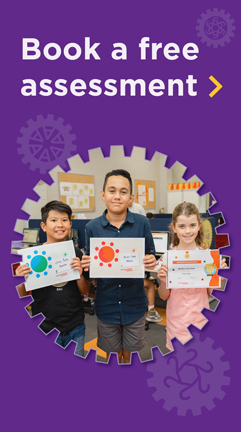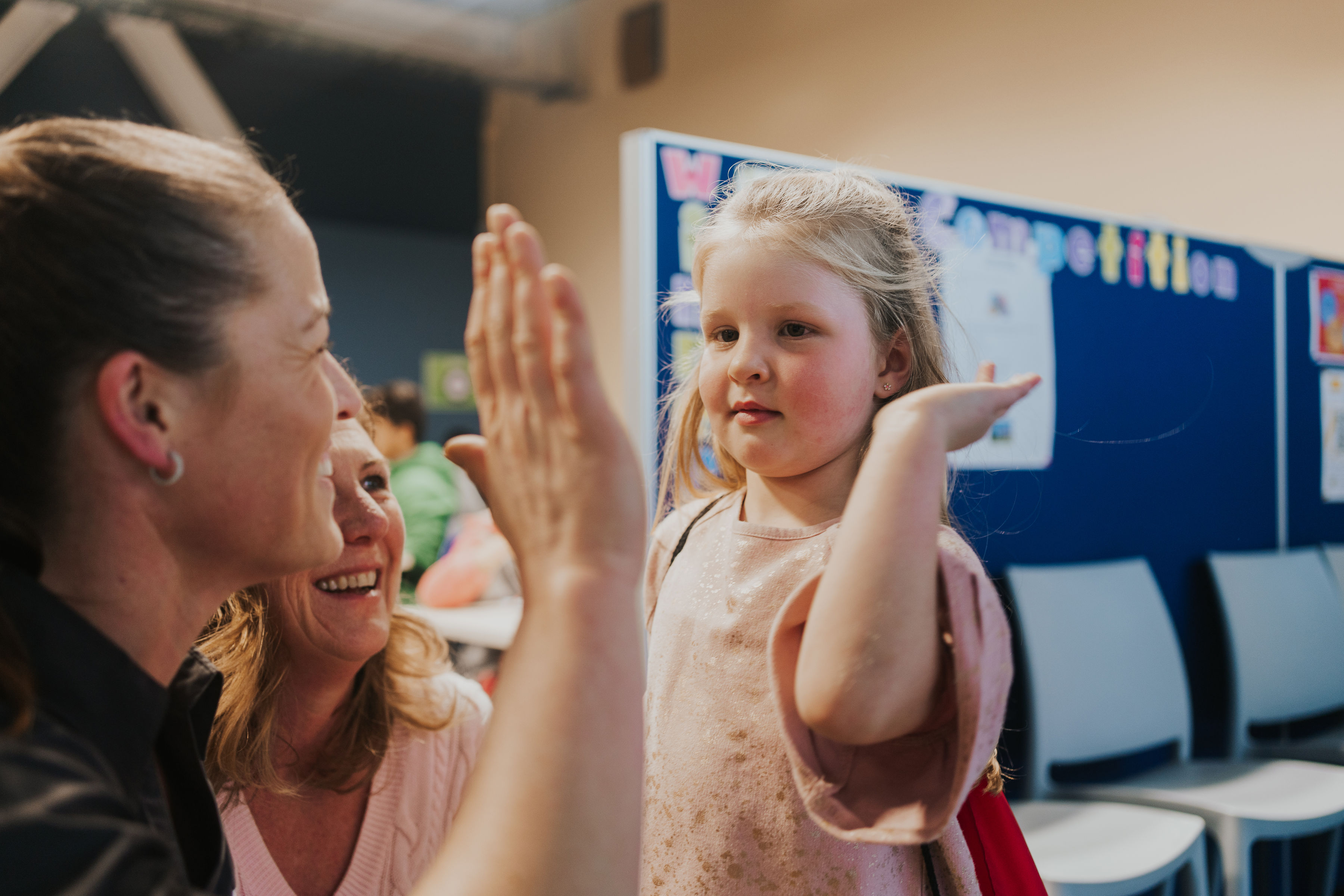Setting Goals for Children

“If we did all the things we are capable of, we would astound ourselves.”
—Thomas Edison
The establishment of goals is a pivotal element in personal development and achievement, representing a fundamental skill to be acquired early in life. Goals function as potent motivators, propelling individuals toward the realisation of their dreams and urging them to surpass their expectations.
Teaching children the art of goal-setting contributes significantly to the enhancement of their self-perception, the cultivation of their strengths, the identification of weaknesses, and the acquisition of visualisation techniques.
Moreover, the accomplishment of set goals not only fosters confidence but also provides a tangible illustration of success, serving as an inspiring example for children to draw upon. Explore the following insights to effectively guide your children in the process of setting and achieving goals.
1. Write clear and measurable goals
The feeling of accomplishment that comes with achieving a goal is truly priceless. Accomplishing goals requires hard work, determination, and a well-crafted plan, highlighting the significance of goal setting. Creating a plan not only provides a clear sense of direction but also helps children clarify their priorities and focus on what truly matters to them.
Initiate the goal-setting process by assisting your child to articulate clear, measurable objectives. Collaborate with them to brainstorm what holds importance for the term or the school year. Once ideas are on paper, distil a specific goal and consider how progress will be measured. Especially with younger children, it's advisable to concentrate on a single goal in one aspect of their life, rather than juggling multiple learning objectives simultaneously.
For beginners, it's beneficial for children to start with smaller learning goals. Achieving these smaller milestones fosters confidence and nurtures a positive attitude toward goal setting. A primary learning goal, for example, could be advancing a reading level at school.
Once the goal is defined, establish a system for tracking progress, including measures for assessment, a target completion date, and scheduled progress check-ins. Consider incorporating a reward or celebration for reaching the goal to reinforce positive reinforcement. For instance, 'I will advance to the next grade level and reading group by the end of term four.'
Encourage your child to set a diverse range of goals that align with their aspirations. This approach not only empowers them to actively shape their future but also instils a sense of accountability in themselves.
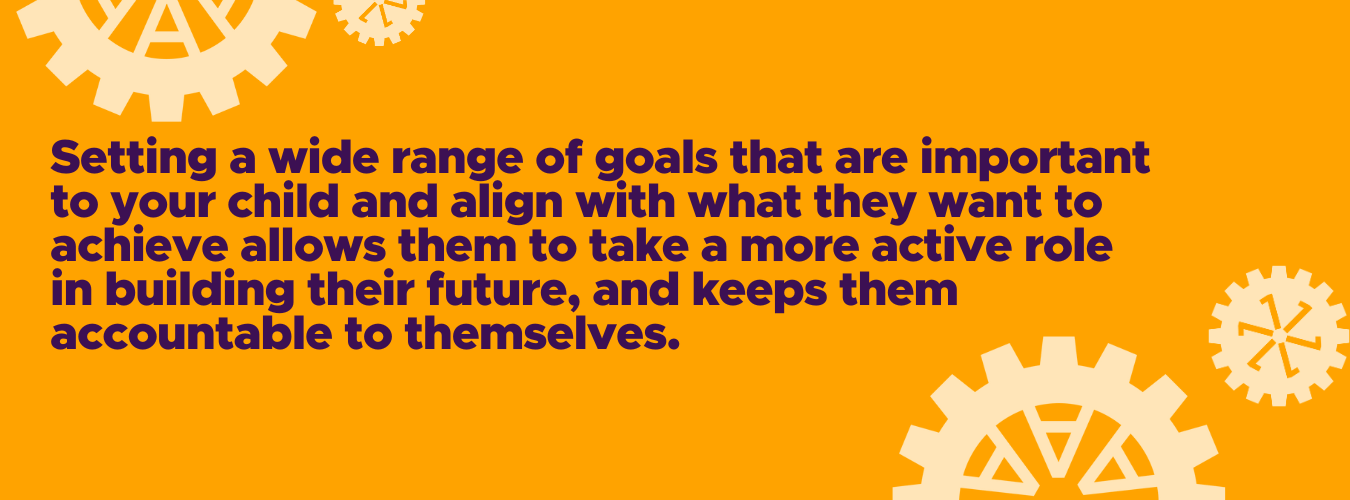
2. Create a specific action plan for goal setting
Once you've established a set of goals, create a specific action plan for each one. While the details of each action plan will differ, most will involve consistent study or practice of a particular skill or activity.
For learning goals, an effective action plan should include dedicated time for studying towards the goal. Using the reading level example, a practical goals plan for students might consist of:
- 30 minutes of independent reading each afternoon
- 15 minutes of reading with a parent before bedtime
- Reading a challenging book once per week
With a well-defined plan, these actions seamlessly integrate into the child's daily routine, turning goals into ingrained habits. To address any motivation challenges, consider documenting the daily tasks as part of a to-do list, enabling the child to check off completed tasks as they make progress.
3. Review and visualise own goals
Two critical factors in achieving goals involve regularly reviewing them and envisioning successful outcomes. When establishing goals with your child, make sure to document them and place them in a location where they can encounter them daily.
Consider utilising a blackboard in the kitchen or living room or attaching a sheet of paper to the fridge. This approach acts as a tangible reminder of the personal achievement goals they have set, instilling a sense of accountability.
Visualisation is another potent technique to assist children in reaching their goals. By mentally picturing themselves having achieved their objectives—whether it's making it onto a competitive sports team, advancing in class, improving grades through tutoring, receiving a school award, or swimming the length of a pool—they not only start to perceive the attainability of their goals but also maintain motivation and build confidence in their journey towards accomplishment.
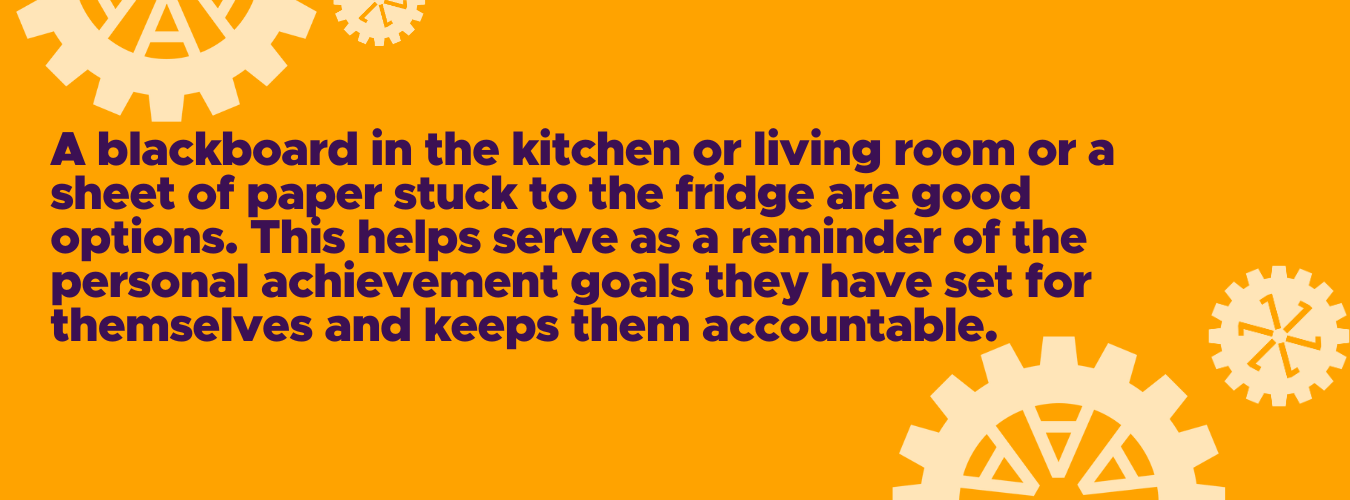
4. Reflect on progress to see if they are on target
When you establish a goal with your child, integrate regular progress check-ins as a fundamental part of the process. These check-ins can be conducted through weekly or monthly reviews, during which you sit down together to assess their progress and evaluate the execution of their action plan.
These routine check-ins serve a dual purpose. Firstly, they aid in determining whether the child is on track with their goals and consistently working towards them. Secondly, they offer an opportunity to assess if any adjustments are needed in the action plan. Conducting these reviews regularly not only holds children accountable but also serves as a reminder of the purpose behind the goals they set initially.
5. Celebrate accomplishments
When a goal is successfully achieved, take the opportunity to celebrate! Whether the goal is significant or modest, acknowledging the accomplishment is crucial. The chosen celebration or reward should be in harmony with the nature of the goal. If it was a long-term endeavour or a challenging stretch goal, commemorate the achievement with something special.
Set aside time to relish the sense of accomplishment with your child before moving on to a new goal that builds upon their previous successes. Instructing children on how to set ambitious goals and stretch their abilities is fundamental to their overall success and confidence as they navigate the world.
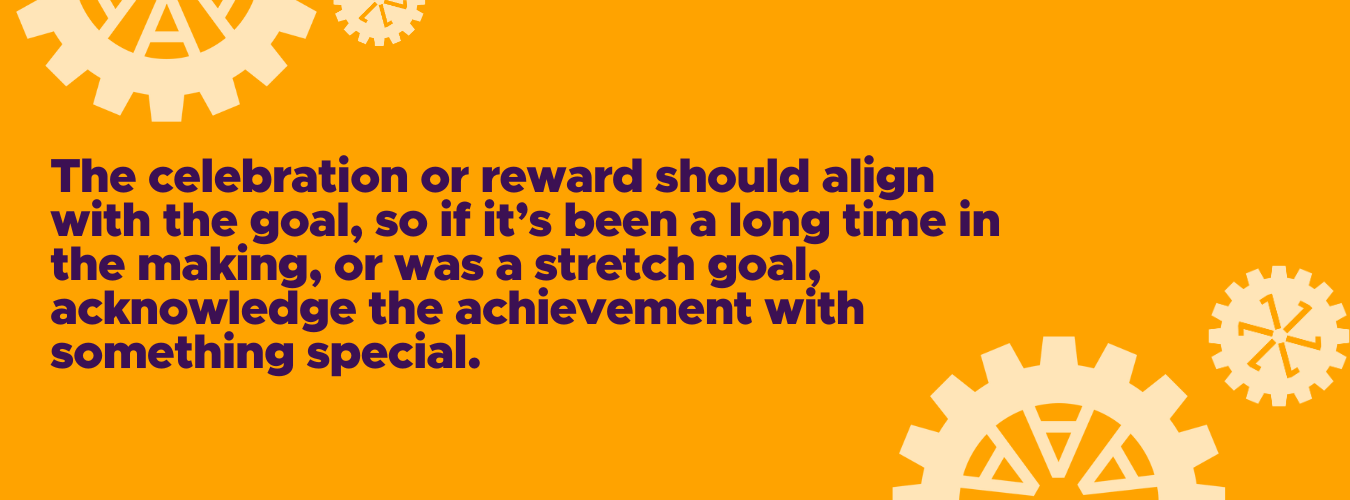
The process of setting and tracking goals can be not only rewarding but also transformative for children. It's important to recognise that everyone starts as a beginner in all the pursuits they undertake.
Embarking on the journey of setting challenging goals may initially appear daunting, but it is precisely through this process that we undergo growth and mastery. Begin the goal-setting process with your children and consider setting goals alongside them to encourage a collaborative approach.
If your child is ready to set learning goals and level up in maths and English, get in touch with our team today. Our results-based tutoring is personalised to each child’s learning goals and focuses on building confidence in young learners.
We help children set academic goals, and coach them along the way, through 1-1 tutoring in a supportive environment that celebrates success. Contact your local centre to learn more, or book a free assessment for your child.


